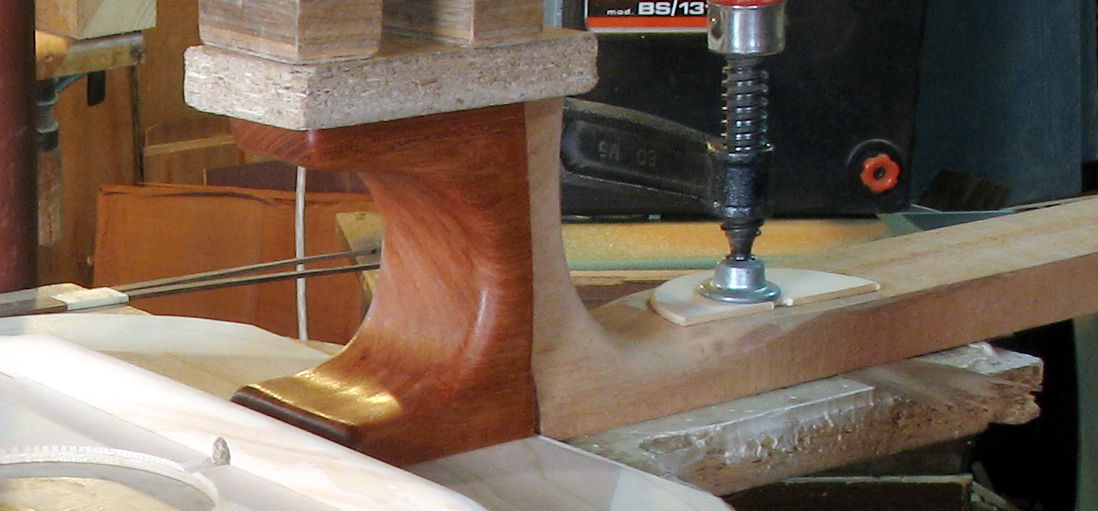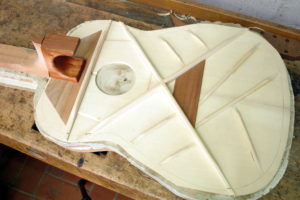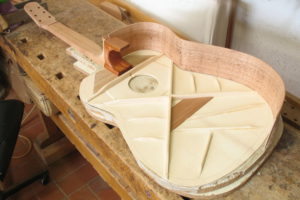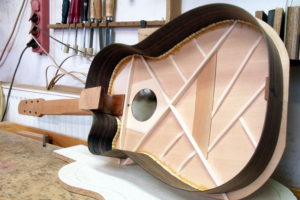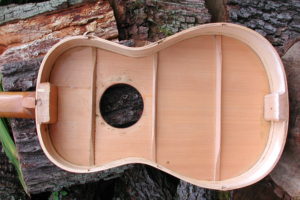Spanish heel - what is it?
The Spanish heel neck joint is considered the most highly developed neck joint in guitar construction. It is significantly more complex than a glued neck, but the sonic benefits are worth the effort.
When building a guitar with a Spanish neck, neck and headblock are carved from one piece of wood. The neck is the first thing to be made.
The headblock at the bottom of the neck is U- or L-shaped. This is where the body is built around. First, the headblock is glued to the top.
Then the sides are fitted to the top and into the lateral slits in the block. The slots are not very deep, so that about 70% of the wood fibers of the neck run into the body without interruption.
Benefits of Spanish heel
This is one of the crucial advantages over set neck joints, such as dovetail neck joint or mortise and tenon joint. The vibration is not interrupted by the Spanish heel, there are no or hardly audible nodes. Another advantage for sound transmission is, that the material of the neck-body junction can be kept very small.
In other words, the headblock of a mortise and tenon neck or a dovetail joint is heavier than the headblock of a Spanish neck and the direction of the fibers is often transverse to the wood of the neck.
Past and Present
The Spanish heel construction came with all the other revolutionary inventions of Antonio de Torres, in the mid-19th century. Lutherie is unthinkable without this high standard, at least with classical guitars.
So we build our classical guitars, except for our student guitar Estudio, with Spanish constructed heel.
Since the 1980s, this neck joint is increasingly used also for steel string guitars because of the aforementioned sonic advantages.
All steel string guitars are built with Spanish constructed heel.

